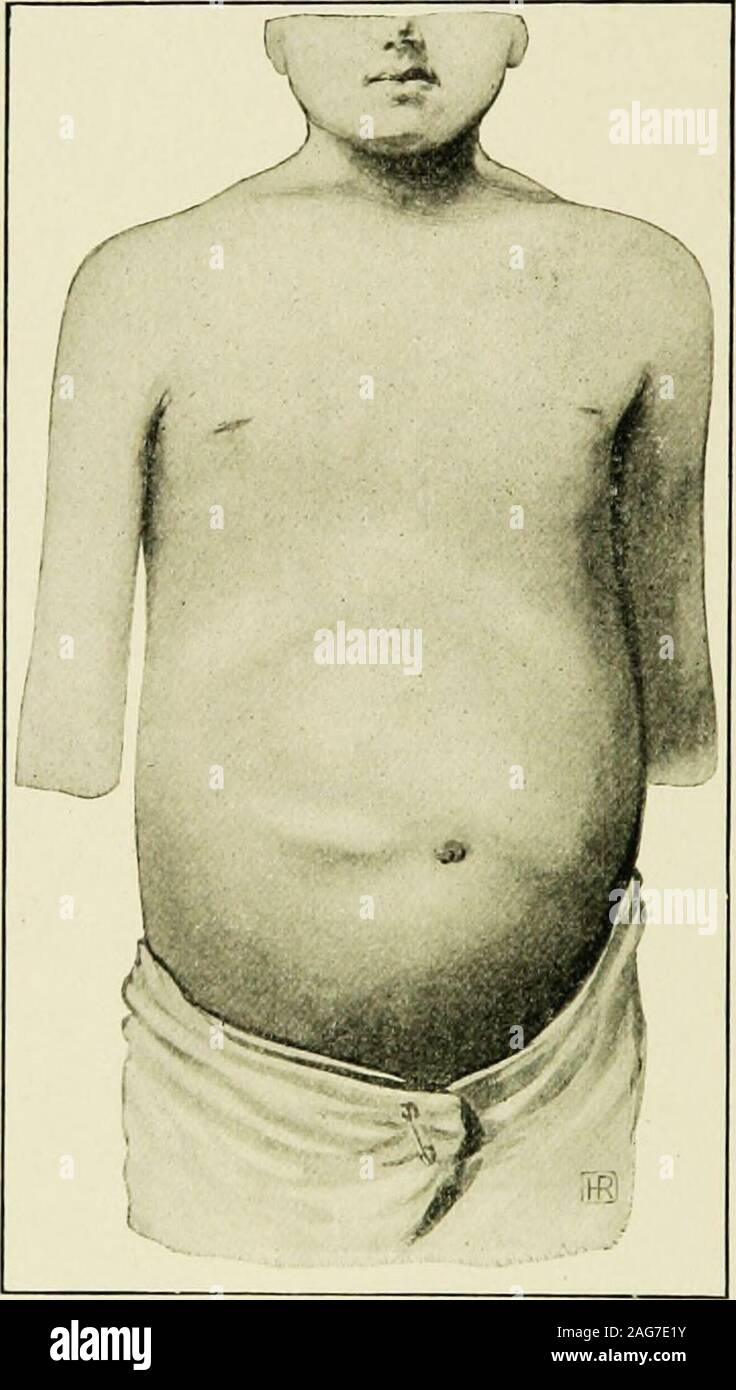. The diseases of infancy and childhood : designed for the use of students and practitioners of medicine. Fig. 91.—Uniform abdominal dis-tention due to ascites of tuberculousperitonitis; enlarged spleen. 414 THE SPECIFIC INFECTIOUS DISEASES there are encapsulations of fluid, the signs will not vary on changing theposition of the patient. On the other hand, in the adhesive form therewill be evidences of tumor masses in the abdominal cavity, cysticformations caused by the encapsulated exudate, and little or no fluid.In cases of adhesions in tuberculous peritonitis of the miliary form,the fact th

Image details
Contributor:
The Reading Room / Alamy Stock PhotoImage ID:
2AG7E1YFile size:
7.1 MB (230.4 KB Compressed download)Releases:
Model - no | Property - noDo I need a release?Dimensions:
1190 x 2100 px | 20.2 x 35.6 cm | 7.9 x 14 inches | 150dpiMore information:
This image is a public domain image, which means either that copyright has expired in the image or the copyright holder has waived their copyright. Alamy charges you a fee for access to the high resolution copy of the image.
This image could have imperfections as it’s either historical or reportage.
. The diseases of infancy and childhood : designed for the use of students and practitioners of medicine. Fig. 91.—Uniform abdominal dis-tention due to ascites of tuberculousperitonitis; enlarged spleen. 414 THE SPECIFIC INFECTIOUS DISEASES there are encapsulations of fluid, the signs will not vary on changing theposition of the patient. On the other hand, in the adhesive form therewill be evidences of tumor masses in the abdominal cavity, cysticformations caused by the encapsulated exudate, and little or no fluid.In cases of adhesions in tuberculous peritonitis of the miliary form, the fact that when the patient is in the recumbent position the coilsof gut may here and there be seen outlined over the abdominal parietes, is of diagnostic value (Fig. 92). I was able by this means to confirm. Fig. 92, — Tuberculous peritonitis, miliary form, female child, aged five years.Irregular contour of abdominal parietes in the recumbent posture, showing intestinalagglutination. the diagnosis of adhesions in one such case, and have detected themclinically in other cases in which this form of peritonitis had beendiagnosed. The lier may be enlarged as a result of amyloid degeneration ortuberculous interstitial hepatitis. The spleen may be enlarged as a result of amyloid degeneration. Rectal examination may reveal miliary nodules or peritoneal massespalpable through the walls of the rectum. TUBERCULOSIS 415 Diagnosis.—The diagnosis is based on the slow and insidious onset, the colicky abdominal pains, abdominal tenderness on palpation, thepresence of ascites or tumor masses, constipation alternating withdiarrhea, progressi^e loss of strength, intermittent fever or slightrise of temperature in the evenings, and the presence of tuberculosisin other organs. At the outset tuberculous in